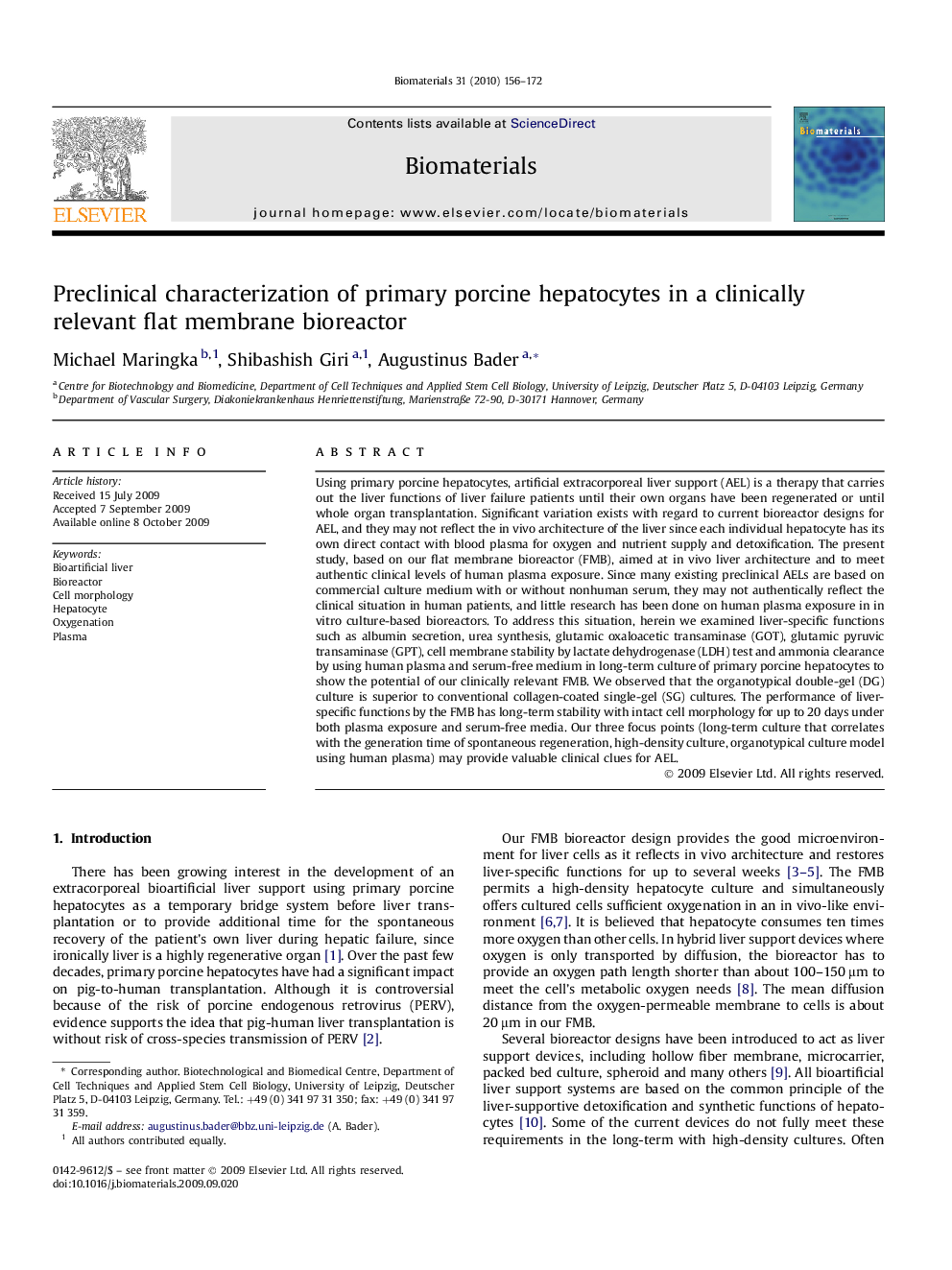| Article ID | Journal | Published Year | Pages | File Type |
|---|---|---|---|---|
| 10034 | Biomaterials | 2010 | 17 Pages |
Using primary porcine hepatocytes, artificial extracorporeal liver support (AEL) is a therapy that carries out the liver functions of liver failure patients until their own organs have been regenerated or until whole organ transplantation. Significant variation exists with regard to current bioreactor designs for AEL, and they may not reflect the in vivo architecture of the liver since each individual hepatocyte has its own direct contact with blood plasma for oxygen and nutrient supply and detoxification. The present study, based on our flat membrane bioreactor (FMB), aimed at in vivo liver architecture and to meet authentic clinical levels of human plasma exposure. Since many existing preclinical AELs are based on commercial culture medium with or without nonhuman serum, they may not authentically reflect the clinical situation in human patients, and little research has been done on human plasma exposure in in vitro culture-based bioreactors. To address this situation, herein we examined liver-specific functions such as albumin secretion, urea synthesis, glutamic oxaloacetic transaminase (GOT), glutamic pyruvic transaminase (GPT), cell membrane stability by lactate dehydrogenase (LDH) test and ammonia clearance by using human plasma and serum-free medium in long-term culture of primary porcine hepatocytes to show the potential of our clinically relevant FMB. We observed that the organotypical double-gel (DG) culture is superior to conventional collagen-coated single-gel (SG) cultures. The performance of liver-specific functions by the FMB has long-term stability with intact cell morphology for up to 20 days under both plasma exposure and serum-free media. Our three focus points (long-term culture that correlates with the generation time of spontaneous regeneration, high-density culture, organotypical culture model using human plasma) may provide valuable clinical clues for AEL.
